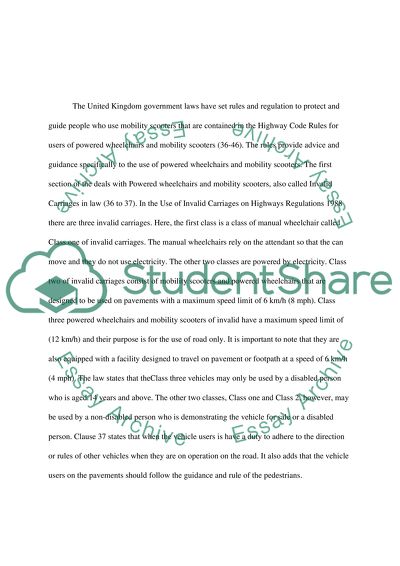Wheelchair regulation Coursework Example | Topics and Well Written Essays - 500 words. Retrieved from https://studentshare.org/design-technology/1637219-wheelchair-regulation
Wheelchair Regulation Coursework Example | Topics and Well Written Essays - 500 Words. https://studentshare.org/design-technology/1637219-wheelchair-regulation.


